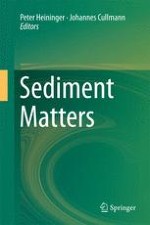2015 | OriginalPaper | Buchkapitel
Projected Climate Change Impact on Soil Erosion and Sediment Yield in the River Elbe Catchment
verfasst von : Thorsten Pohlert
Erschienen in: Sediment Matters
Aktivieren Sie unsere intelligente Suche, um passende Fachinhalte oder Patente zu finden.
Wählen Sie Textabschnitte aus um mit Künstlicher Intelligenz passenden Patente zu finden. powered by
Markieren Sie Textabschnitte, um KI-gestützt weitere passende Inhalte zu finden. powered by
